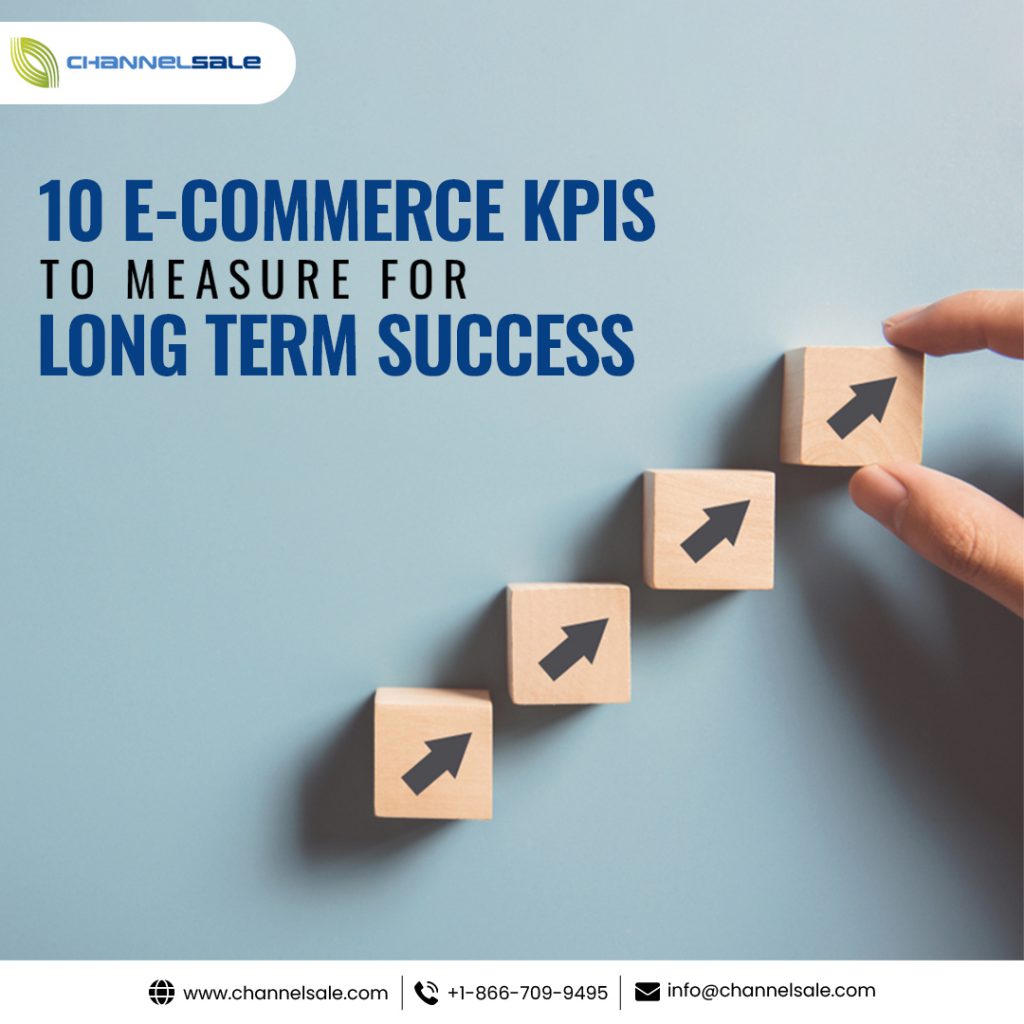Nowadays, many businesses’ expansion plans depend heavily on e-commerce. E-commerce enterprises must routinely assess their performance and make data-based decisions to remain in the highly competitive online marketplace. In this method, Key Performance Indicators (KPIs) are crucial. The 10 key e-commerce KPIs that businesses should monitor to assess their success and make informed decisions are covered in this blog.
Sales Conversion Rate
Since it demonstrates how well your website converts visitors into consumers, the sales conversion rate must be a key performance indicator in any e-commerce plan. Monitoring this KPI can enhance the consumer experience, product presentation, and website layout. A high conversion rate demonstrates a well-optimized website but also the effectiveness of your marketing campaigns in bringing in targeted traffic.
Customer Acquisition Cost
Understanding the expense of obtaining new consumers is crucial for sustainable expansion. Using the CAC calculation, e-commerce businesses can allocate their marketing budget efficiently. Additionally, keeping track of CAC over time could notify you of how well your marketing channels work. If you want to reduce CAC, prioritize the best customer acquisition channels, improve your targeting strategies, and optimize your advertising efforts.
Average Order Value
The average order value (AOV) could be strategically increased to boost revenue without attracting additional customers. One way to do this is by incorporating upselling and cross-selling methods into practice. For instance, selling product bundles, suggesting related items, or providing discounts on larger purchases can all be used to tempt customers to spend more money on each transaction. Increased customer lifetime value and instant cash are benefits of an efficient AOV strategy.
Cart Abandonment Rate
Cart abandonment is a common issue in the e-commerce landscape. Carefully examining the cart abandonment rate can reveal certain issues with the checkout process. By expediting the checkout process, making shipping costs obvious, and using cart recovery emails, it is possible to lower cart abandonment rates and recover money that has been lost.
Customer Lifetime Value
A KPI, Client Lifetime Value (CLV), emphasizes developing strong client relationships. Businesses should focus on strategies other than one-time purchases to enhance CLV. Remarkable customer service, specialized marketing campaigns, and loyalty programs are required to achieve this. By doing this, businesses increase the value of every customer and develop brand loyalty, which fosters organic growth through referrals and positive reviews.
Website Traffic Sources
Understanding the sources of visitors to your website is crucial for the success of any e-commerce business. By examining this KPI, you can discover which channels drive visitors to your website. Referrals, social networking, sponsored search, and paid advertising are typical traffic sources. By looking further into this data, you can find which specific keywords, campaigns, or platforms are most effective in attracting visitors with high conversion rates.
Return on Investment
Return on investment (ROI), a financial metric, measures the effectiveness of your marketing initiatives. ROI considers both the revenue received and the costs associated with marketing activities. Calculating ROI for each campaign or channel lets you learn which investments generate the best returns. With this knowledge, you can more skillfully plan your marketing budget by allocating resources to strategies and initiatives that offer a higher return on investment.
Inventory Turnover Rate
Inventory turnover rate is a KPI that monitors how quickly you sell and refill your inventories. Effective inventory management is indicated by a high turnover rate, which reduces the likelihood of overstocking or investing money in unsold goods. Businesses can maximize this KPI by frequently monitoring inventory levels, properly forecasting demand, and implementing strategies to promote the sale of slow-moving commodities.
Customer Retention Rate
The degree to which customers continue to be interested in your brand over time is shown by your customer retention rate. Utilizing strategies like loyalty programs, tailored discounts, and first-rate customer service, this KPI must be raised. A higher customer retention rate not only boosts revenue but also lowers the cost of client acquisition because devoted customers are more likely to make repeat purchases and refer your business to others.
Mobile Commerce Metrics
Mobile commerce (m-commerce) has expanded quickly in recent years; thus, tracking KPIs specific to mobile is crucial. In addition to the overall mobile traffic percentage, metrics like the mobile conversion rate, average transaction value on mobile devices, and mobile bounce rate provide insight into the mobile user experience. Ensuring your website is mobile-responsive and user-friendly will help you increase these KPIs and give you access to the continually expanding mobile consumer base.
Final Note
By including these additional details in your e-commerce plan along with the KPIs above, a complete picture of the performance of your online business will be given.
ChannelSale, a reputable supplier of e-commerce solutions, is aware of the significance of these steps in aiding businesses to flourish in the online market. By effectively utilizing these KPIs, e-commerce businesses can ensure long-term success and maintain a competitive edge in the ever-evolving e-commerce market.
Contact us for a demo of the ChannelSale platform today from our Expert team members.
E-Commerce KPIs: How To Measure And What To Measure,

